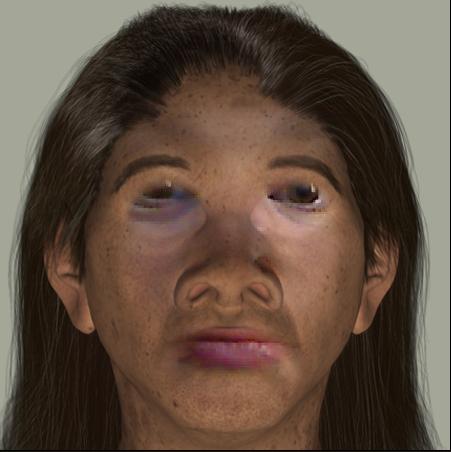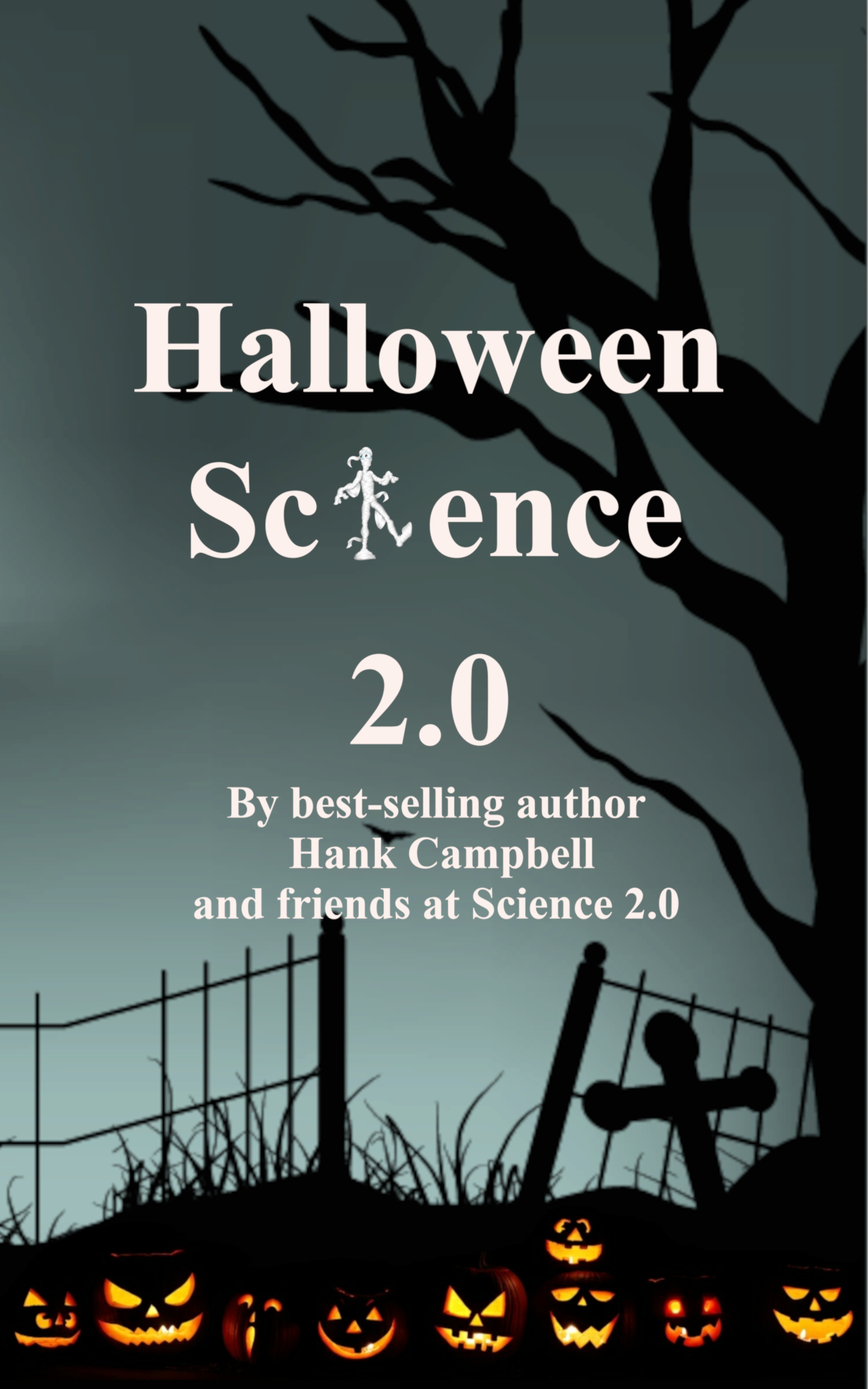The exhibit hall "offers visitors an immersive, interactive journey through 6 million years of scientific evidence for human origins and the stories of survival and extinction in our family tree during times of dramatic climate instability," the Smithsonian says. I had the fortune to visit the exhibit this weekend; if you're in D.C.1 in the future, I strongly recommend you check it out.
Traveling through time
You enter the exhibit through the Time Tunnel, which displays animations of distant human relatives throughout the past 6 million years and examples of different environments in which early humans lived.
Next, the Orientation and Evolutionary Milestones sections orient you to milestones in our history - when some of the major human traits emerged over the past 6 million years, from walking upright to domesticating plants and
 animals. A large "family tree" on one wall shows that we modern humans are the lone survivor of our species (Homo sapiens), while an accompanying panel shows that while we are related genetically to primates, we aren't descended from them but rather we branched off from a common ancestor about 6-8 million years ago. You can also see how genetically related we are to things like banana trees (60%) or chickens (75%). Finally, there's a video showing climate changes throughout history and how human traits such as toolmaking and large brains emerged during times of extreme climate shifts.
animals. A large "family tree" on one wall shows that we modern humans are the lone survivor of our species (Homo sapiens), while an accompanying panel shows that while we are related genetically to primates, we aren't descended from them but rather we branched off from a common ancestor about 6-8 million years ago. You can also see how genetically related we are to things like banana trees (60%) or chickens (75%). Finally, there's a video showing climate changes throughout history and how human traits such as toolmaking and large brains emerged during times of extreme climate shifts. In Snapshots of Survival, visitors interact with media displays to learn about "survival challenges faced by three different early human species living at three different times and places (Paranthropus robustus, 1.8 million years ago, Swartkrans, South Africa; Homo erectus, 990,000 years ago, Olorgesailie, Kenya; Homo neanderthalensis, 65,000 years ago, Shanidar Cave, Iraq) and how scientists interpret prehistoric clues."
In Snapshots of Survival, visitors interact with media displays to learn about "survival challenges faced by three different early human species living at three different times and places (Paranthropus robustus, 1.8 million years ago, Swartkrans, South Africa; Homo erectus, 990,000 years ago, Olorgesailie, Kenya; Homo neanderthalensis, 65,000 years ago, Shanidar Cave, Iraq) and how scientists interpret prehistoric clues."A Smithsonian Research Station shows what Human Origins scientists are doing out in the field - the Rift Valley of East Africa and northern China - and allows viewers a glimpse into how the objects they see in front of them are first discovered and examined.
One of my favorite parts of the exhibit was the Meet Your Ancestors section, where you could explore the similarities and differences of humans across the ages. There were 76 fossil skulls
 from 15 species of early humans, including Cro-Magnum Man and the oldest-known fossil human (Sahelanthropus tchadensis). There was also a CSI-like display where you learned how scientists determined how these people died (an eagle attack, crocodile bite, vitamin overdose, and blow to the head), and how scientists figured out the age, sex and diet of a full Neanderthal skeleton from Iraq (discovered 1957). The Neanderthal died from a stab wound, and it might be the oldest-known homicide on record! Talk about a cold case.
from 15 species of early humans, including Cro-Magnum Man and the oldest-known fossil human (Sahelanthropus tchadensis). There was also a CSI-like display where you learned how scientists determined how these people died (an eagle attack, crocodile bite, vitamin overdose, and blow to the head), and how scientists figured out the age, sex and diet of a full Neanderthal skeleton from Iraq (discovered 1957). The Neanderthal died from a stab wound, and it might be the oldest-known homicide on record! Talk about a cold case.A really popular feature of the section was the chance to transform yourself into an early human. We crowded around with everyone else and watched as a photograph (taken by a machine in
 the exhibit) magically morphed you into either a Neanderthal or Homo floresiensis. I picked H. floresiensis. It was a little difficult to align facial features exactly with the guide on the screen, so the eyes are a little off, but here is what I would look like as an early human! (It really looks nothing like me, but there are a few features here and there that are faint echoes of my facial structure. It was fun to watch normal-looking people transform into something out of Planet of the Apes.) As a member of the H. floresiensis, I lived "just 95,000 to 17,000 years ago on an
the exhibit) magically morphed you into either a Neanderthal or Homo floresiensis. I picked H. floresiensis. It was a little difficult to align facial features exactly with the guide on the screen, so the eyes are a little off, but here is what I would look like as an early human! (It really looks nothing like me, but there are a few features here and there that are faint echoes of my facial structure. It was fun to watch normal-looking people transform into something out of Planet of the Apes.) As a member of the H. floresiensis, I lived "just 95,000 to 17,000 years ago on an island in what is now Southeast Asia. You are very small [I knew that already] with a brain only about a third the size of modern humans [which would explain why I'm always losing my keys]. But you make tools, control fire, hunt a variety of animals, and your small size helps you survive on an island with limited resources."
SimCity and Second Life fans will enjoy Changing the World, where computer games teach you "how Homo sapiens became the sole surviving human species, how modern humans changed the world, and how our human traits help us imagine our future." One game lets you predict what humans will look like in a million years as we and the Earth continue to evolve; another reminded
 me of Oregon Trail, as you navigate your group through "a series of imaginary survival challenges and make choices that affect our species’ survival - demonstrating that whether Homo sapiens thrives or becomes extinct depends in part on how adaptable we are and how well we cooperate with each other." Food for thought, no?
me of Oregon Trail, as you navigate your group through "a series of imaginary survival challenges and make choices that affect our species’ survival - demonstrating that whether Homo sapiens thrives or becomes extinct depends in part on how adaptable we are and how well we cooperate with each other." Food for thought, no?A 5-minute video in One Species, Living Worldwide brings the viewer up to the "beginning" of modern humans, about 200,000 years ago in Africa, and how we've spread around the world. Finally, before you leave the exhibit features videos and skulls to review what you've learned.
Throughout the exhibit are bronze statues of five different early human species that lived between 2.3 million and 17,000 years ago, as well as photos from John Gurche's 3-D reconstructions of early humans.2

The Web site for the exhibit is fantastic - check it out here. There are sections for what's hot in human origins news, coming events (like the Scientist is In program, in which visitors can chat with Human Origins scientists), religious perspectives on human evolution, fun facts, a section where you can say what you think it means to be human and read what others have written, and a forum for teachers and students (and even lesson plans). Plus there are links to human evolution evidence and research, fact sheets on human origins and traits, and more.
I still don't have an answer to the question of what it means to be human, but I understand better how I got here, and possibly where we humans are going.
---------------------------------------------------------------------------------------------------------------
1 There is an exhibit by the same name in NYC's American Museum of Natural History, apparently. I haven't visited there yet.
2 See Mike's blog on Gurche's photos.






Comments